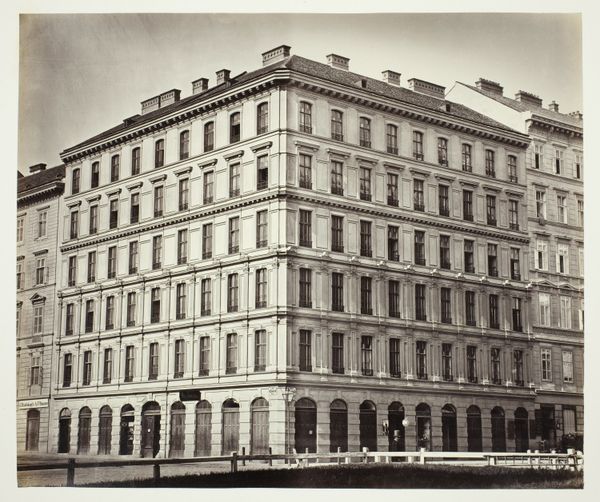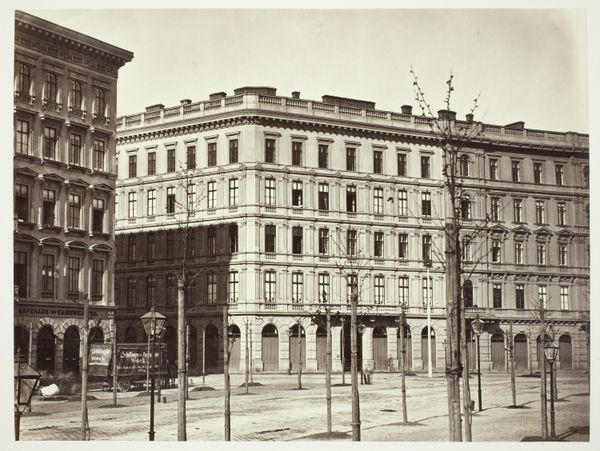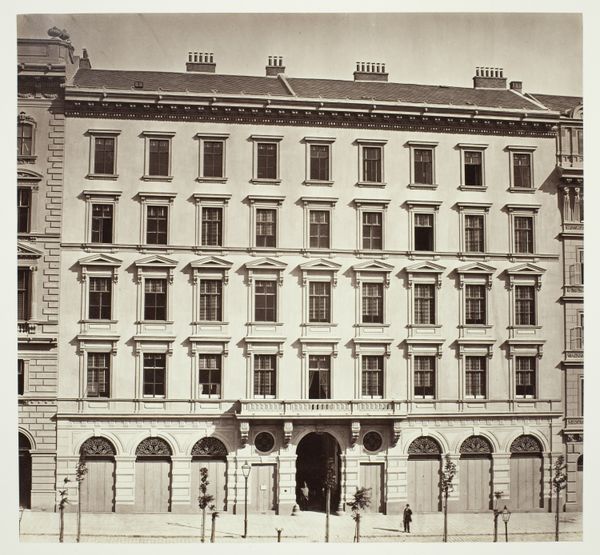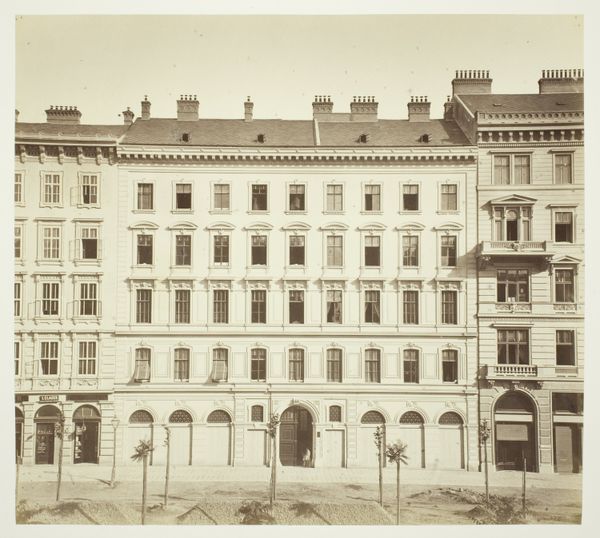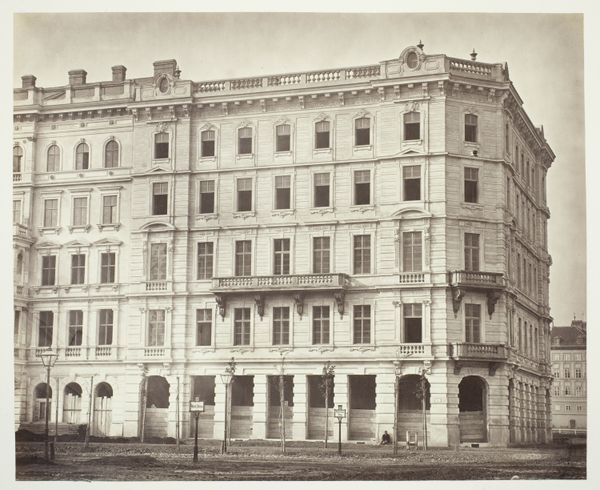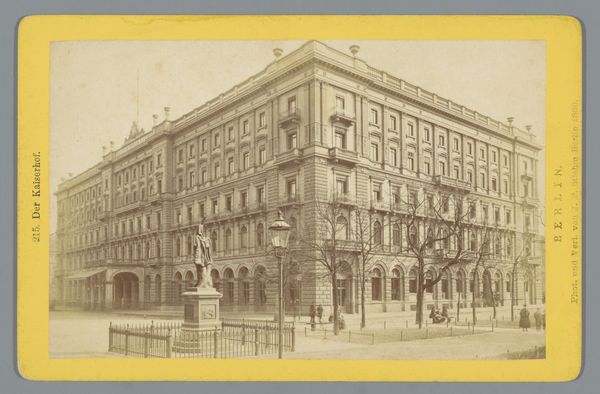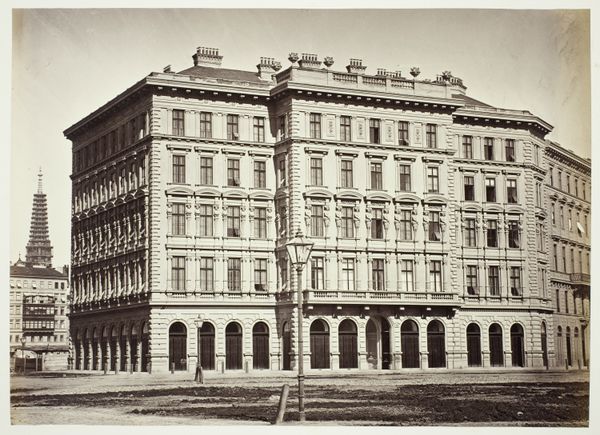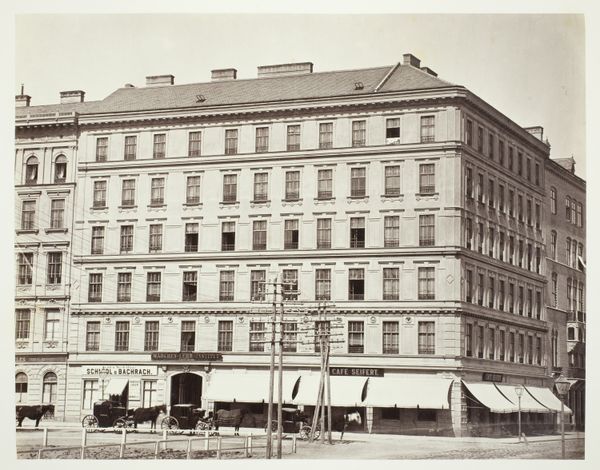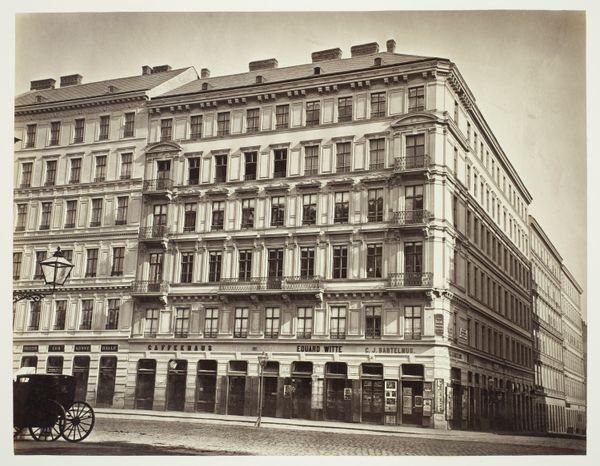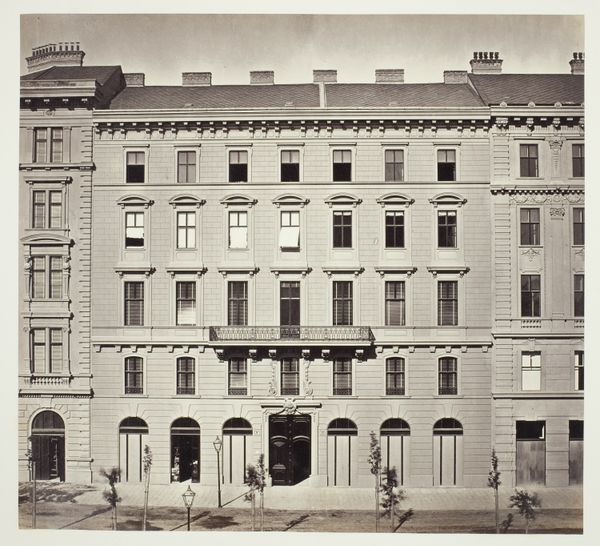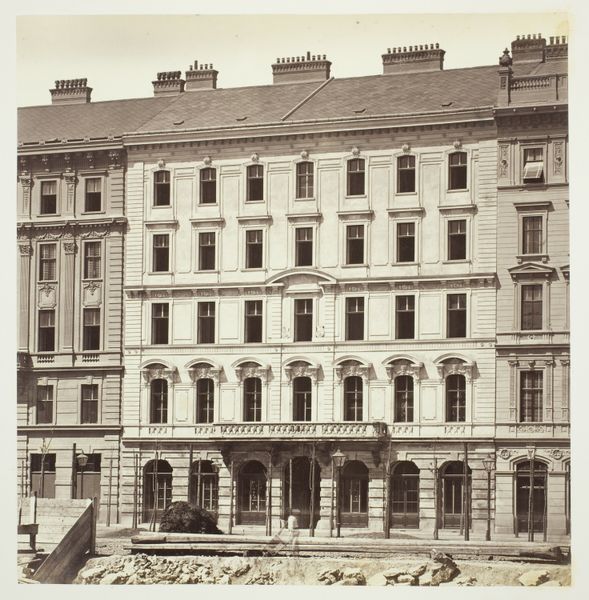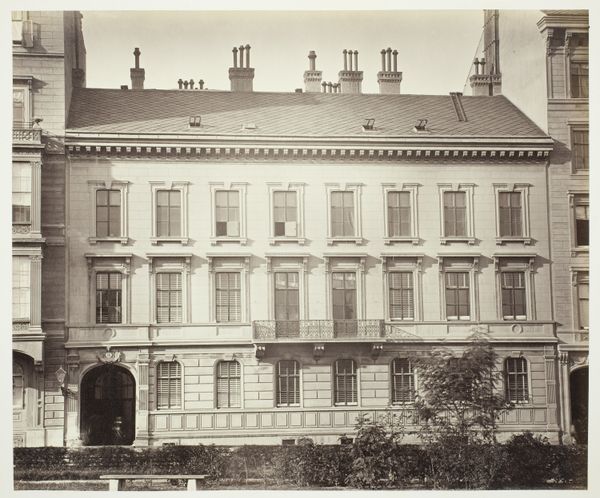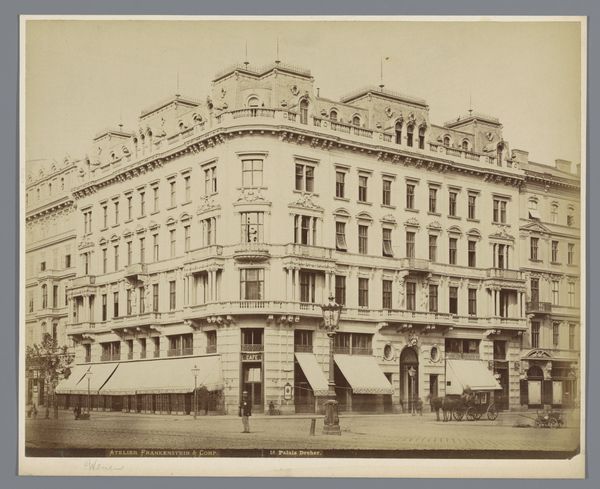
Opern-Ring No. 10, Wohnhaus des Fried. Ritter von Schey c. 1860s
0:00
0:00
Dimensions: 24.3 × 34 cm (image/paper); 42.8 × 61.3 cm (album page)
Copyright: Public Domain
Editor: This photograph, "Opern-Ring No. 10, Wohnhaus des Fried. Ritter von Schey," was taken around the 1860s. It’s a silver print showing a grand Neoclassical building. I'm immediately struck by the formality of the scene; everything seems so structured and ordered. What are your thoughts? Curator: It’s fascinating to see how photography, even in its early stages, was employed to document and, in a sense, legitimize the architectural achievements and social order of the time. Consider the placement of this building along the Opern-Ring. This ring road was part of a major urban renewal project in Vienna, designed to project imperial power and modernization. How does the Neoclassical style itself contribute to this impression? Editor: I suppose the Neoclassical style, with its emphasis on symmetry and order, reflects the desire for a rational, stable society. Curator: Precisely! This building, the home of Friedrich Ritter von Schey, wasn’t just a private residence; it was a public statement. The meticulous photographic technique, likely a deliberate choice, presents this home as a monument of civic pride. Consider also how the emerging middle class used images like this to cement their aspirations of culture and knowledge by building imposing homes. Are we just observing architecture, or are we perhaps witnessing a social and political theater in photographic form? Editor: So the photograph is more than just a record, it's an active participant in shaping perceptions. Curator: Absolutely. It reinforces the values and ambitions of a specific social class during a period of intense societal transformation. The photographic lens here doesn’t merely capture; it curates. Editor: I hadn't considered how the image itself could be a form of propaganda, even if unintentional. It adds another layer to appreciating not just the building, but its role within a wider cultural context. Curator: And perhaps that’s the key takeaway. Examining how art interacts with its social and political backdrop opens a richer understanding of the artist's intent and the viewer’s interpretation.
Comments
No comments
Be the first to comment and join the conversation on the ultimate creative platform.
